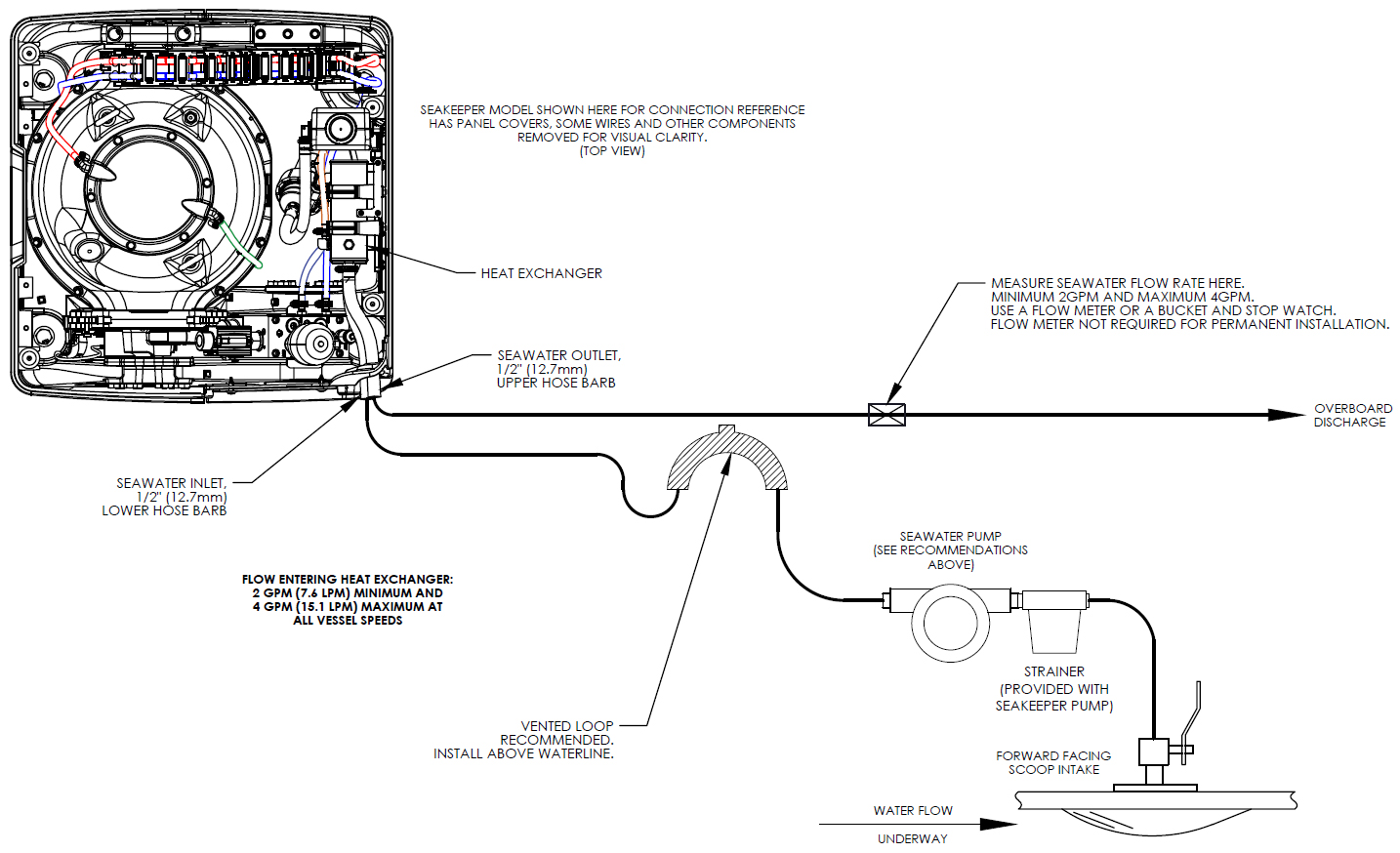Seakeeper 1 Installation Manual (90519-1)
Connecting Seawater to Heat Exchanger
Refer to Figure 3 for typical seawater plumbing arrangement.
- Connect seawater pump to Seakeeper dedicated through-hull fitting. A strainer and seacock valve should generally be installed between the seawater inlet and the pump.
- Connect seawater from installer-supplied seawater pump to lower ½ in. (13 mm) hose barb on heat exchanger.
- Use the same practices as other below waterline seawater plumbing.
- Connect seawater discharge (upper hose barb) to overboard drain. Use the same practices as other below waterline seawater plumbing.
- During commissioning, seawater flow should be checked to be within the flow requirements while the vessel is at rest, at speed, and when backing down.
- If no other method of confirming flow is available, discharge line may be temporarily diverted to a bucket. Flowrate is calculated based on the time required to fill a known volume in GPM / LPM.
- Flowrates in excess of 4 GPM (15.2 LPM) could affect heat exchanger life.
- After sea trial / commissioning, inspect all raw water plumbing for any signs of leakage.
